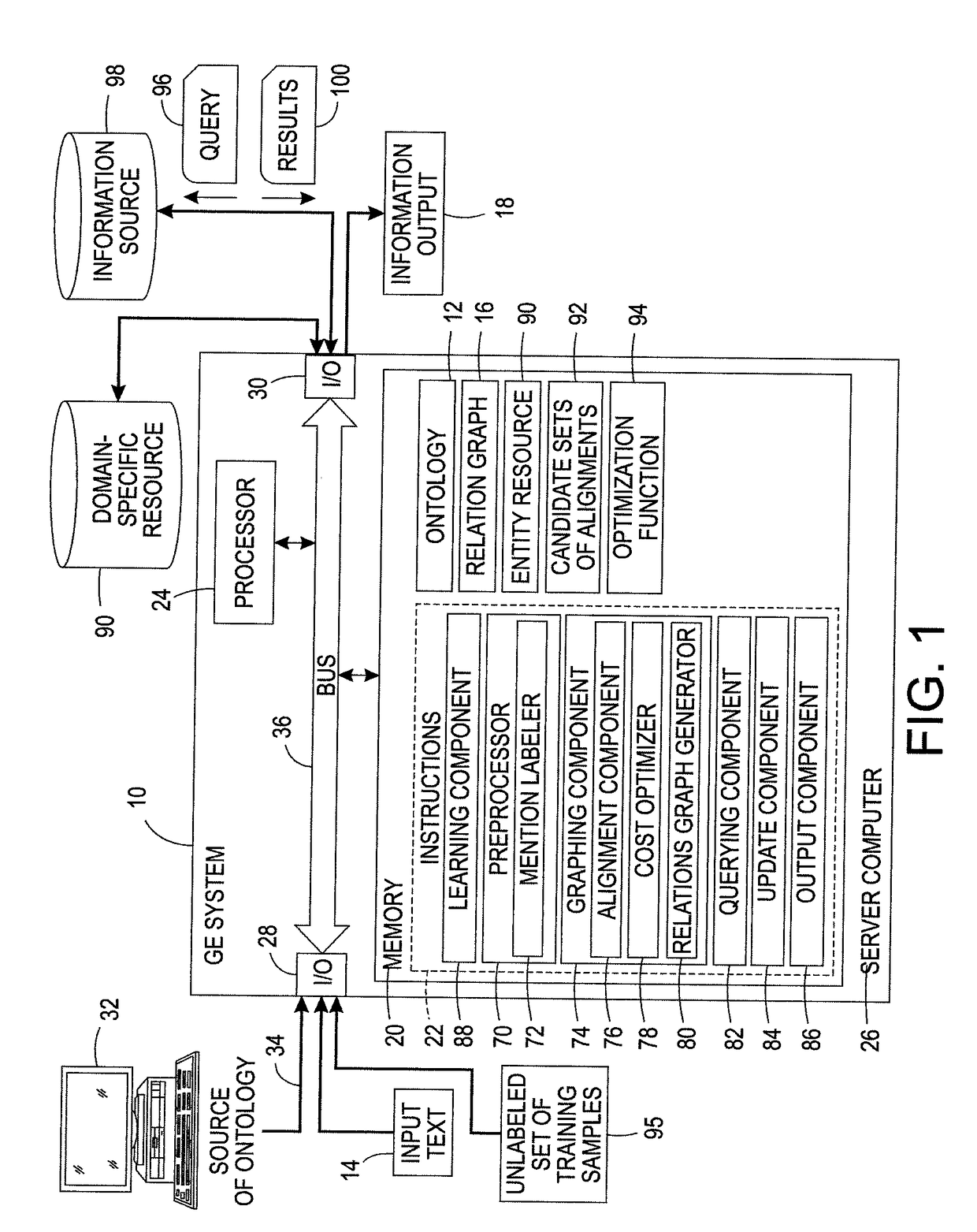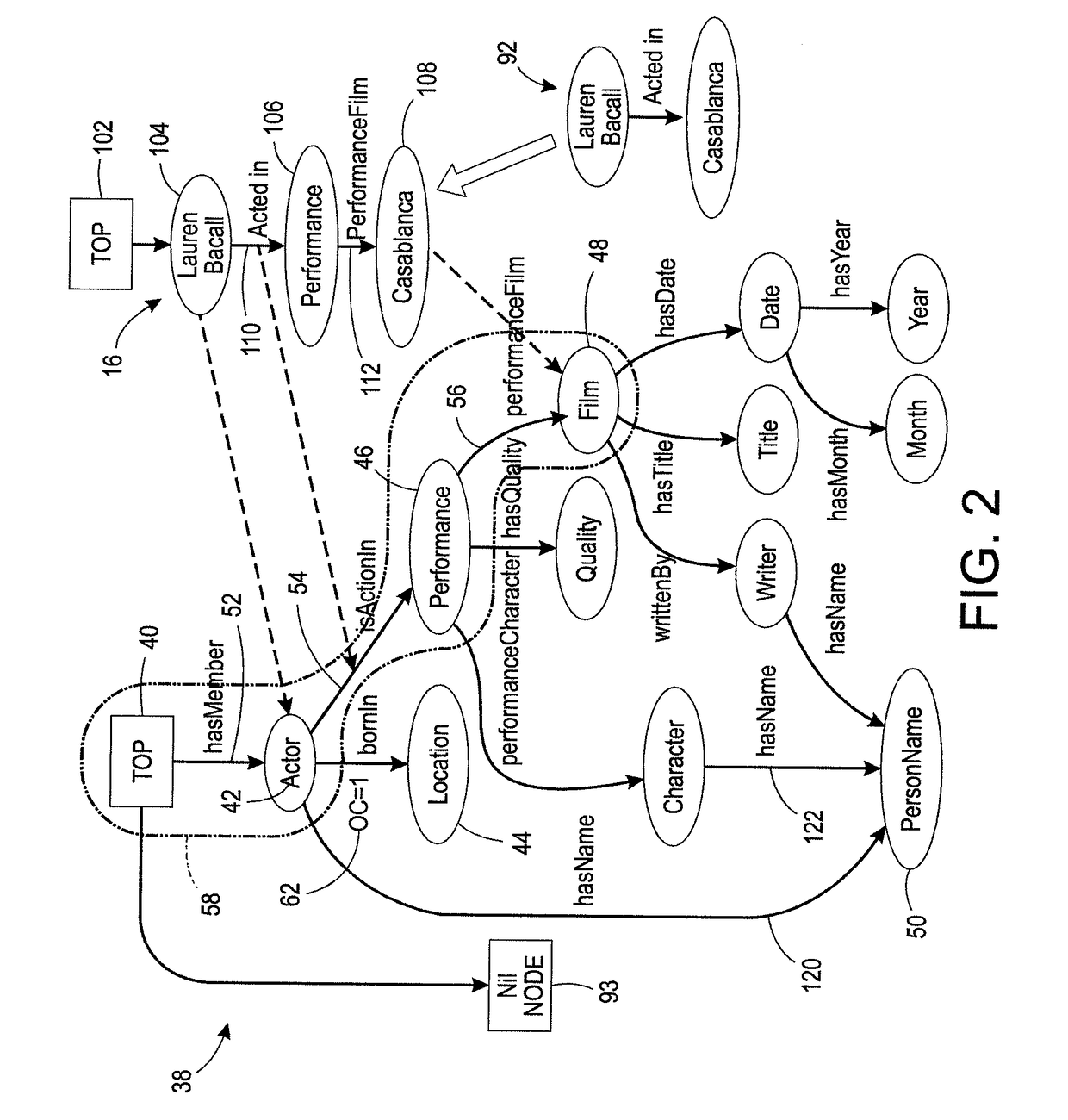Unsupervised ontology-based graph extraction from texts
a graph extraction and text technology, applied in the field of extracting graphs of relations from texts, can solve the problems of developing unsupervised or weakly supervised methods, time-consuming, and expensive annotation of relations in texts
- Summary
- Abstract
- Description
- Claims
- Application Information
AI Technical Summary
Benefits of technology
Problems solved by technology
Method used
Image
Examples
example implementation
8. Probabilistic Graph Edges Alignment
[0163]The exemplary method for identifying an optimal alignment described above in section 7 can be implemented in practice in various ways, depending on how the combination functions , ⊕, and in Equations (1), (2), and (3) are implemented; the exact set of multidimensional distance components being used in the global distance computation; and how the similarity function SimTO, which provides a similarity score between mention senses and ontology nodes, is implemented.
[0164]In one embodiment, a probabilistic embodiment of the general method described above may be employed.
[0165]In this embodiment, a dual objective function is formulated that aims to maximize the probability of producing a specific aligned subgraph instance.)
(A*,g*)=argmax(Ap,gp)∈ΨP(A,gM,Go)PC(g)=argmaxA,glogP(A,gM,Go)+logPC(g)(4)
[0166]P(A,g|M,Go) (complementary to D(A,g)) corresponds to the probability of generating an aligned subgraph instance A,g given the input set of menti...
example
[0235]A small evaluation was performed for a Clinical Trials Eligibility Criteria (CTEC) use case. Example 2 above illustrates the type of information to be extracted. This evaluation was performed using the probabilistic method described in section 8.
[0236]As data, a subset of the clinical trials descriptions available at clinicaltrials.gov was used. For the experiments, 1000 active clinical trials descriptions dealing with breast cancer were used. This corresponds to about 20,000 individual eligibility criteria.
[0237]For evaluation purposes, 40 randomly selected descriptions were manually annotated with the graph structure (represented as a set of triples) that the method aims to generate. The evaluation of the method is performed by graph matching between the extracted set of triples and the reference set of triples. Matching precision, recall and F1 score are computed for evaluation.
[0238]The descriptions are pre-processed to identify mentions of relevant entities using a Medica...
PUM
 Login to View More
Login to View More Abstract
Description
Claims
Application Information
 Login to View More
Login to View More - R&D
- Intellectual Property
- Life Sciences
- Materials
- Tech Scout
- Unparalleled Data Quality
- Higher Quality Content
- 60% Fewer Hallucinations
Browse by: Latest US Patents, China's latest patents, Technical Efficacy Thesaurus, Application Domain, Technology Topic, Popular Technical Reports.
© 2025 PatSnap. All rights reserved.Legal|Privacy policy|Modern Slavery Act Transparency Statement|Sitemap|About US| Contact US: help@patsnap.com



